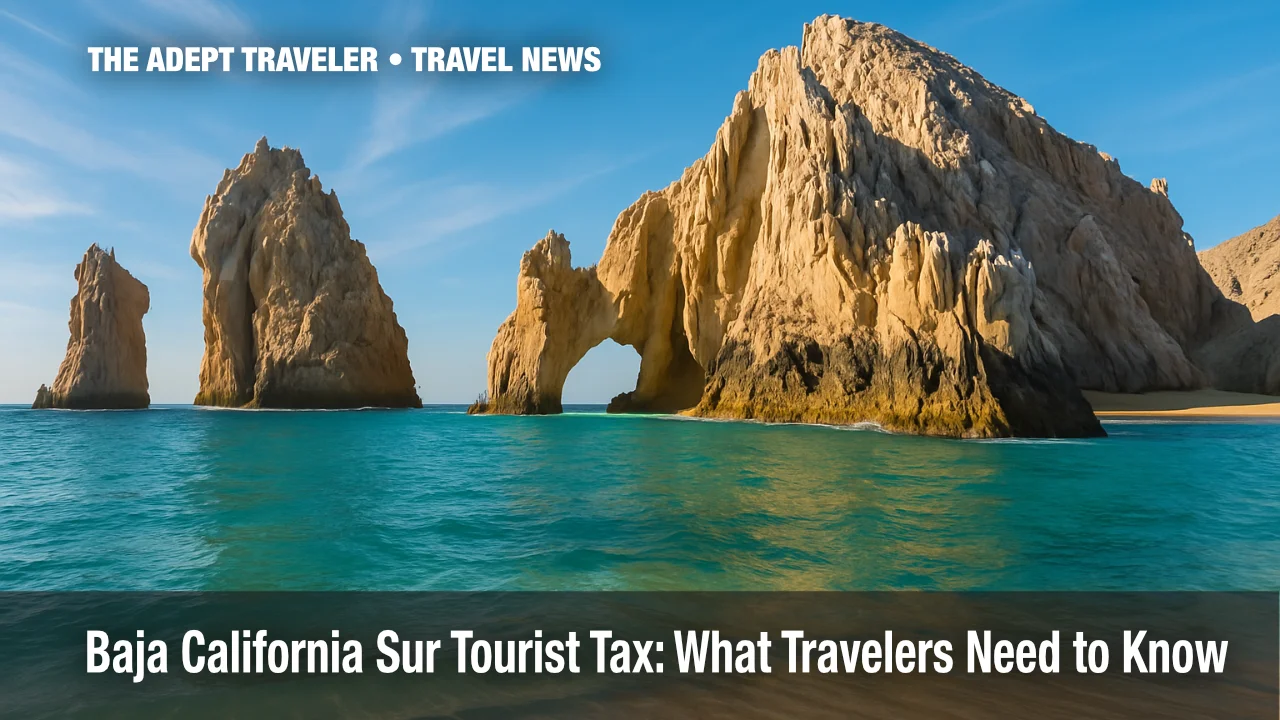Baja California Sur Tourist Tax 2025: Essential Guide for Travelers

Planning a getaway to Mexico's sun-kissed peninsula now comes with a new step. As of July 1, 2025, the Baja California Sur tourist tax-branded Embrace IT-applies to all international visitors who stay more than 24 hours in Los Cabos, La Paz, Loreto, or Mulegé. The 470-peso levy (about $25.00 USD) funds sustainability and community projects, underscoring a growing global push to make tourism pay its way.
Key Points
- Fee is 470 MXN (≈ $25.00 USD) per traveler.
- Applies after 24 hours in Baja California Sur.
- Pay online via Embrace IT or Travelkore; show QR code on arrival.
- Permanent and temporary Mexican residents are exempt.
- Why it matters: Non-payment can delay entry and hurts local initiatives.
Baja California Sur Tourist Tax Snapshot - How It Works
The Embrace IT program is authorized under Article 129 Bis of the state finance law. Visitors complete a quick online form, enter passport details, and pay by credit card in pesos, U.S. dollars, Canadian dollars, euros, or pounds. A confirmation email delivers a QR code that border agents scan at airports, seaports, and highway checkpoints. Cruise passengers face a lower $5.00 USD charge processed by their line. Payments are non-refundable but valid for the duration of the stay, even if travelers move among multiple towns inside the state.
Tourist Tax Background - Why It Matters
Baja California Sur first tested a voluntary tourism fund in 2022, mirroring Quintana Roo's VISITAX. Rapid visitor growth strained waste management, emergency services, and water supplies in Los Cabos, which saw nearly 4,000,000 arrivals in 2024. State lawmakers converted the fee to a mandatory model to secure a predictable revenue stream. Officials say every peso goes toward public safety, crime-victim assistance, health clinics, job training, sports facilities, agriculture, fishing, tourism infrastructure, affordable housing, education, and cultural preservation. Similar destination taxes now exist in Glasgow, Mallorca, Barcelona, Venice, and Bali, signalling a worldwide trend toward pay-to-play tourism stewardship.
Latest Developments
The levy took legal effect on July 1, 2025, with full enforcement already under way. Travelers who have not prepaid face airport kiosks or manual payment booths before reaching immigration, causing lines during peak arrivals. State finance secretary Bertha Montaño Cota said advance payment "ensures a seamless welcome and immediate investment in local well-being." Below are the key rollout details.
Payment Platforms
The state contracted Tourist Tax México (TTMx) to administer the system using Travelkore's PCI-compliant gateway. Both the official Embrace IT site and Travelkore's dedicated page accept Visa, Mastercard, Amex, and PayPal with no foreign-exchange markup. Receipts arrive within minutes. Travelers should screenshot or print the QR code in case of weak airport Wi-Fi.
Enforcement at Entry Points
Los Cabos International (SJD), Cabo San Lucas private terminal, La Paz (LAP), and Loreto (LTO) airports scan codes before baggage claim. Highway checkpoints at Guerrero Negro and the La Paz toll booth now perform random spot checks. Cruise passengers sailing into Cabo San Lucas receive a combined port charge that covers the $5.00 USD tax. Land crossings from the U.S. remain unaffected; the levy begins once visitors enter Baja California Sur territory.
Community Impact and Transparency
A public dashboard, slated for launch in October, will break down collections and project spending by municipality. Early priorities include expanding desalination capacity in Cabo San Lucas, reinforcing sea-turtle conservation near Todos Santos, and funding new emergency-response units along Highway 1. Officials pledge annual audits and third-party oversight to build traveler confidence that the Embrace IT levy delivers on its sustainability promise.
Analysis
For most visitors, $25.00 USD is a small addition to a Los Cabos vacation that averages $2,500.00 USD per person. Yet failing to pay can derail tight connection times, especially for North American travelers on short weekend trips. Booking engines and travel advisors should integrate the tax into pre-trip checklists alongside e-Customs forms and airline verifications. Cruise lines have already bundled the $5.00 USD fee, a model airlines may follow to streamline compliance. Because payment confirmation ties to passport data, group leaders cannot pay for a companion using a nickname or maiden name-consistency is crucial. The levy also factors into budgeting for long-staying digital nomads, who might cross state lines to Baja California Norte before returning. Travelers seeking in-depth advice can review our Mexico visitor fee FAQ for statewide comparisons and cost-saving tips. Overall, the Baja California Sur tourist tax aligns the region with sustainable-tourism benchmarks while adding a minor procedural step that smart planning easily absorbs.
Final Thoughts
The Baja California Sur tourist tax is here to stay. Pay the 470-peso fee online before departure, store the QR code offline, and keep passport details consistent across bookings. Arrive early at airports in case of random checks, and view the levy as an investment in cleaner beaches, safer roads, and richer cultural experiences. With a few clicks, travelers can help preserve the peninsula's natural beauty and ensure their own smooth arrival-no surprise fees, no last-minute stress.
